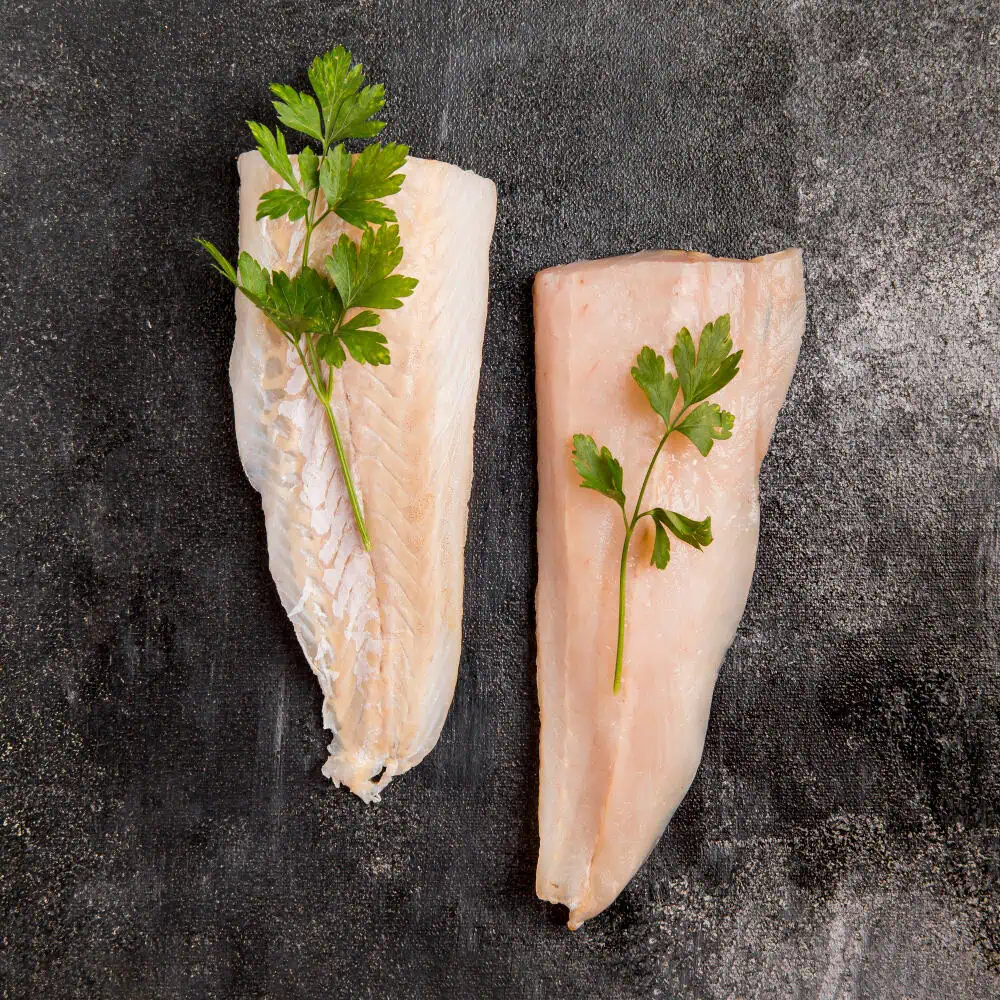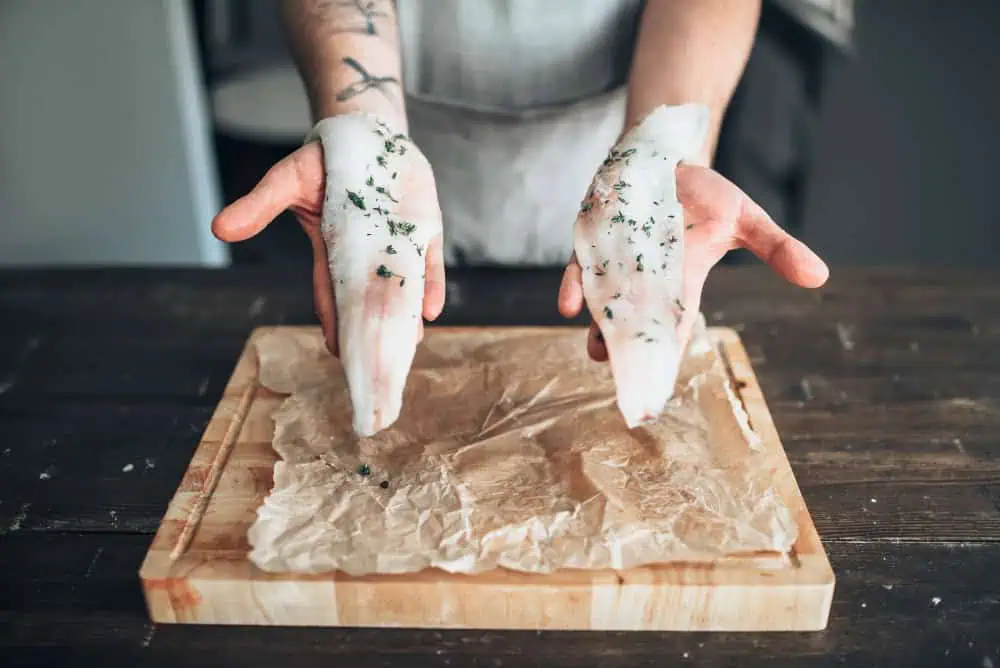Learning how do you remove the skin from branzino is an essential culinary skill that can elevate your seafood preparation game. Branzino, also known as European sea bass, is a prized Mediterranean fish known for its delicate flavor and tender meat. In this comprehensive guide, we’ll walk you through the step-by-step process of skillfully removing the skin from this delicious fish, ensuring you have all the information you need to do it right.
Understanding Branzino: The Mediterranean Sea Bass
Before diving into the skinning process, let’s understand what makes branzino special:
Characteristics of Branzino
- Flavor Profile: It has a mild, sweet flavor that pairs well with various seasonings and cooking methods.
- Texture: The fish features white, flaky meat that is tender and moist when cooked properly.
- Nutritional Benefits: Branzino is high in protein and omega-3 fatty acids, making it a healthy choice for seafood lovers.
Why Learn How to Remove the Skin from Branzino?
Removing the skin from branzino can enhance your dish in several ways:
Benefits of Skinless Branzino Fillets
- Texture: Skinless fillets provide a more delicate texture, allowing the fish’s natural flavors to shine.
- Presentation: Skinless fillets often look more appealing on the plate, especially in fine dining settings.
- Cooking Versatility: Skinless fish can be prepared in various ways, including grilling, poaching, and baking, without the risk of the skin becoming tough or chewy.
Essential Tools for Removing the Skin from Branzino
Required Equipment for Skinning Branzino
To successfully answer the question how do you remove the skin from branzino, you’ll need the following tools:
- Sharp Fillet Knife: A sharp knife is crucial for making clean cuts without tearing the flesh.
- Cutting Board: A stable surface is essential for safety and precision.
- Paper Towels: These will help you keep the fish dry and provide a better grip.
- Fish Scaling Tool (Optional): If your branzino still has scales, this tool can help you remove them easily.
- Kitchen Tweezers (Optional): Useful for removing any pin bones that may be left in the fillet.
- Clean Work Surface: Ensure your workspace is clean to avoid cross-contamination.
Step-by-Step Guide: How Do You Remove the Skin from Branzino?
1. Preparation Phase for Skinning Branzino
Before you begin removing the skin from your branzino, it’s essential to prepare properly:
- Clean the Fish: Ensure the fish is properly cleaned and gutted. If you purchased it whole, ask your fishmonger to do this for you.
- Pat the Fish Dry: Use paper towels to pat the fish dry. This will help you grip it better and prevent slipping.
- Place on a Stable Cutting Board: Position the fish horizontally on the cutting board, ensuring it is secure.
- Have All Tools Within Reach: Gather all your tools so you can work efficiently without interruptions.
2. Initial Cuts: Starting the Skin Removal Process
To start answering how do you remove the skin from branzino, follow these steps:
- Make a Small Incision: Using your sharp fillet knife, make a small incision near the tail of the fish. This cut should be just deep enough to penetrate the skin without cutting into the flesh.
- Grip the Skin Firmly: With your non-dominant hand, grip the skin firmly at the cut point. This will give you better control as you work.
- Position Your Knife: Hold the knife at a 45-degree angle to the fish. This angle will help you separate the skin from the flesh more effectively.
3. The Skinning Technique: How to Remove the Skin from Branzino
Follow these precise steps to effectively remove the branzino’s skin:
- Hold the Skin: With your non-dominant hand, hold the skin tightly at the incision you made. This grip is crucial for maintaining control.
- Insert the Knife: Place the knife between the meat and the skin, starting at the tail end. Ensure the blade is angled slightly downward.
- Use a Sawing Motion: Begin to use a gentle sawing motion while simultaneously pulling the skin away from the flesh. This technique helps to separate the skin without tearing the meat.
- Keep the Blade Angled: Maintain the knife at a slight downward angle as you move forward. This will help you avoid cutting into the flesh and ensure a clean separation.
- Move Slowly and Steadily: Take your time as you work your way up the fish. Rushing can lead to mistakes and uneven cuts.
4. Final Touches After Skin Removal
Once you have successfully removed the skin from the branzino:
- Inspect the Fillet: Check for any remaining scales or pin bones. Use kitchen tweezers to remove any bones you find.
- Trim Excess Fat: If there are any fatty areas or uneven edges, trim them off with your knife for a cleaner presentation.
- Rinse the Fillet: Rinse the skinless fillet under cold water to remove any residual scales or debris. Pat it dry with paper towels.
Professional Tips for Perfectly Removing Skin from Branzino
Expert Recommendations for Skin Removal
To ensure you achieve the best results when answering how do you remove the skin from branzino, consider the following expert tips:
- Keep Your Knife Sharp: A sharp knife is essential for making clean cuts. Regularly hone your knife to maintain its edge.
- Work on a Cold Fish: If possible, work with a cold fish. Cold fish are firmer and easier to handle, making the skinning process more manageable.
- Use Long, Smooth Strokes: Instead of short, choppy movements, use long, smooth strokes with your knife. This technique will help you maintain control and achieve a cleaner cut.
- Practice on Smaller Pieces First: If you’re new to skinning fish, practice on smaller pieces before attempting a whole branzino. This will help you build confidence and improve your technique.
- Clean Your Work Surface Frequently: Keep your work area clean to avoid cross-contamination and ensure a safe cooking environment.

Common Mistakes to Avoid When Learning How to Remove the Skin from Branzino
What Not to Do During Skin Removal
When learning how do you remove the skin from branzino, it’s essential to avoid common mistakes that can hinder your success:
- Rushing the Process: Take your time to ensure you make clean cuts. Rushing can lead to mistakes and uneven fillets.
- Using a Dull Knife: A dull knife can tear the flesh and make the skinning process more difficult. Always use a sharp knife for the best results.
- Pulling Too Hard on the Skin: While it’s important to grip the skin firmly, pulling too hard can cause the flesh to tear. Use a gentle but steady pull.
- Cutting at Wrong Angles: Ensure your knife is at the correct angle to avoid cutting into the flesh. Practice will help you develop a feel for the right angle.
- Skipping the Initial Preparation: Proper preparation is key to successful skinning. Always clean and dry the fish before you begin.
Alternative Methods for Removing Skin from Branzino
Different Approaches to Skin Removal
While the method described above is the most common, there are alternative approaches to removing skin from branzino:
- The Traditional Method: This method involves removing the skin after filleting the fish. Start by filleting the fish as you normally would, then use the same skinning technique to remove the skin from the fillet.
- The Professional Method: Some chefs prefer to remove the skin before filleting the fish. This method requires a bit more skill but can result in cleaner fillets. Use a sharp knife to carefully separate the skin from the flesh, then proceed to fillet the fish as usual.
FAQs About How to Remove the Skin from Branzino
Common Questions Regarding Skinning Branzino
Q: Should I remove the skin before or after cooking?
A: It’s typically easier to remove branzino skin before cooking, but some recipes call for cooking with skin on for added flavor and moisture.
Q: Can I eat branzino skin?
A: Yes, branzino skin is edible and nutritious when properly scaled and cooked crispy. Many people enjoy the texture and flavor it adds to the dish.
Q: How do I know if I’m removing too much meat with the skin?
A: If you see white flesh attached to the removed skin, adjust your knife angle to be more parallel to the cutting board. Practice will help you develop a better feel for the right technique.
Q: Is it necessary to remove branzino skin?
A: No, it’s a matter of preference and recipe requirements. Some dishes specifically call for skinless fillets, while others benefit from the added flavor of the skin.
Q: What if I accidentally tear the skin?
A: If you tear the skin, don’t worry! Just continue to work carefully, and you can still remove the skin in sections. Practice will help you improve your technique over time.
Q: How can I tell if my branzino is fresh?
A: Fresh branzino should have clear, bright eyes, shiny skin, and a mild ocean smell. The flesh should be firm and bounce back when pressed.
Storage and Preparation Tips for Skinless Branzino
After Skin Removal: Proper Storage Techniques
Once you’ve successfully completed the branzino skin removal:
- Store Fillets Properly: Place the skinless fillets in an airtight container to keep them fresh.
- Use Within 1-2 Days: If refrigerated, consume the fillets within 1-2 days for the best quality.
- Freezing for Later Use: If you need to store the fillets for a longer period, they can be frozen for up to 3 months. Wrap them tightly in plastic wrap and place them in a freezer-safe bag.
- Keep Skin On if Freezing: If you plan to freeze the fish, consider keeping the skin on for better protection against freezer burn.

Cooking Ideas for Skinless Branzino: Recipe Suggestions
Explore Delicious Ways to Prepare Skinless Branzino
Once you’ve mastered removing the skin from branzino, you can explore various cooking methods to enjoy this delicious fish. Here are some recipe ideas:
- Pan-Seared Fillets:
- Ingredients: Branzino fillets, olive oil, salt, pepper, lemon.
- Instructions: Heat olive oil in a skillet over medium-high heat. Season the fillets with salt and pepper. Place the fillets skin-side down in the skillet and cook for 3-4 minutes until golden brown. Flip and cook for an additional 2-3 minutes. Serve with a squeeze of fresh lemon juice.
- Poached Branzino:
- Ingredients: Branzino fillets, white wine, water, herbs (such as dill or parsley), lemon slices.
- Instructions: In a large skillet, combine equal parts white wine and water. Add herbs and lemon slices. Bring to a simmer, then gently add the fillets. Poach for 8-10 minutes until the fish is opaque and flakes easily with a fork. Serve with a light salad or steamed vegetables.
- Grilled Branzino:
- Ingredients: Whole branzino (scaled and gutted), olive oil, garlic, herbs, lemon.
- Instructions: Preheat the grill to medium-high heat. Rub the fish with olive oil, minced garlic, and herbs. Grill for 6-8 minutes on each side until the flesh is opaque and flakes easily. Serve with grilled vegetables and a side of rice.
- Branzino Tacos:
- Ingredients: Branzino fillets, corn tortillas, cabbage slaw, avocado, lime, salsa.
- Instructions: Season the fillets with your favorite spices and grill or pan-sear them. Warm the corn tortillas and fill them with the cooked fish, cabbage slaw, sliced avocado, and a squeeze of lime. Top with salsa for added flavor.
- Branzino with Tomato and Olive Salsa:
- Ingredients: Branzino fillets, cherry tomatoes, olives, capers, garlic, basil, olive oil.
- Instructions: Sauté minced garlic in olive oil, then add halved cherry tomatoes, olives, and capers. Cook until the tomatoes soften. Season the branzino fillets with salt and pepper, then bake or pan-sear them. Serve topped with the tomato and olive salsa.
Sustainability and Sourcing: Choosing Your Branzino Wisely
Responsible Sourcing of Branzino
When purchasing branzino, it’s essential to consider sustainability and sourcing:
- Look for Sustainable Sources: Choose branzino that is certified by organizations like the Marine Stewardship Council (MSC) or the Aquaculture Stewardship Council (ASC).
- Check for Freshness Indicators: Fresh branzino should have clear eyes, shiny skin, and a mild ocean smell. Avoid fish with dull skin or a strong fishy odor.
- Consider Farm-Raised Options: Farm-raised branzino can be a more sustainable choice, as it often has a lower environmental impact than wild-caught fish.
- Support Local Fishmongers: Whenever possible, buy from local fishmongers who prioritize sustainable practices and can provide information about the fish’s origin.
Health Benefits of Branzino: Nutritional Value
Why Branzino is a Healthy Choice
Branzino is not only delicious but also packed with health benefits:
- High in Protein: A great source of lean protein, branzino supports muscle growth and repair.
- Rich in Omega-3 Fatty Acids: These healthy fats are essential for heart health and brain function.
- Low in Mercury: Compared to some other fish, branzino has lower mercury levels, making it a safer choice for regular consumption.
- Good Source of Vitamins: Branzino is rich in vitamins D and B12, which are important for bone health and energy metabolism.
Conclusion: Mastering the Art of Branzino Skin Removal
Learning how do you remove the skin from branzino might seem challenging at first, but with practice and the right technique, it becomes second nature. Whether you’re preparing this delicious fish for a special occasion or a weeknight dinner, proper skinning technique ensures the best possible result. Remember to take your time, use the right tools, and follow each step carefully for professional-quality results.
With the knowledge and skills you’ve gained from this guide, you’re now equipped to tackle branzino skin removal with confidence. Enjoy experimenting with different cooking methods and recipes to make the most of this versatile fish. Happy cooking!
Additional Resources for Further Learning
Enhance Your Seafood Preparation Skills
- Watch Professional Demonstrations: Look for online videos or cooking shows that demonstrate fish skinning techniques.
- Practice with Different Fish Varieties: Try your hand at skinning other types of fish to build your skills and confidence.
- Join Cooking Classes: Consider enrolling in local cooking classes that focus on seafood preparation.
- Consult Seafood Preparation Guides: Invest in cookbooks or online resources that specialize in seafood cooking techniques.
By mastering the art of removing skin from branzino, you can enhance your culinary repertoire and impress your family and friends with delicious seafood dishes. Enjoy your journey into the world of seafood cooking!

